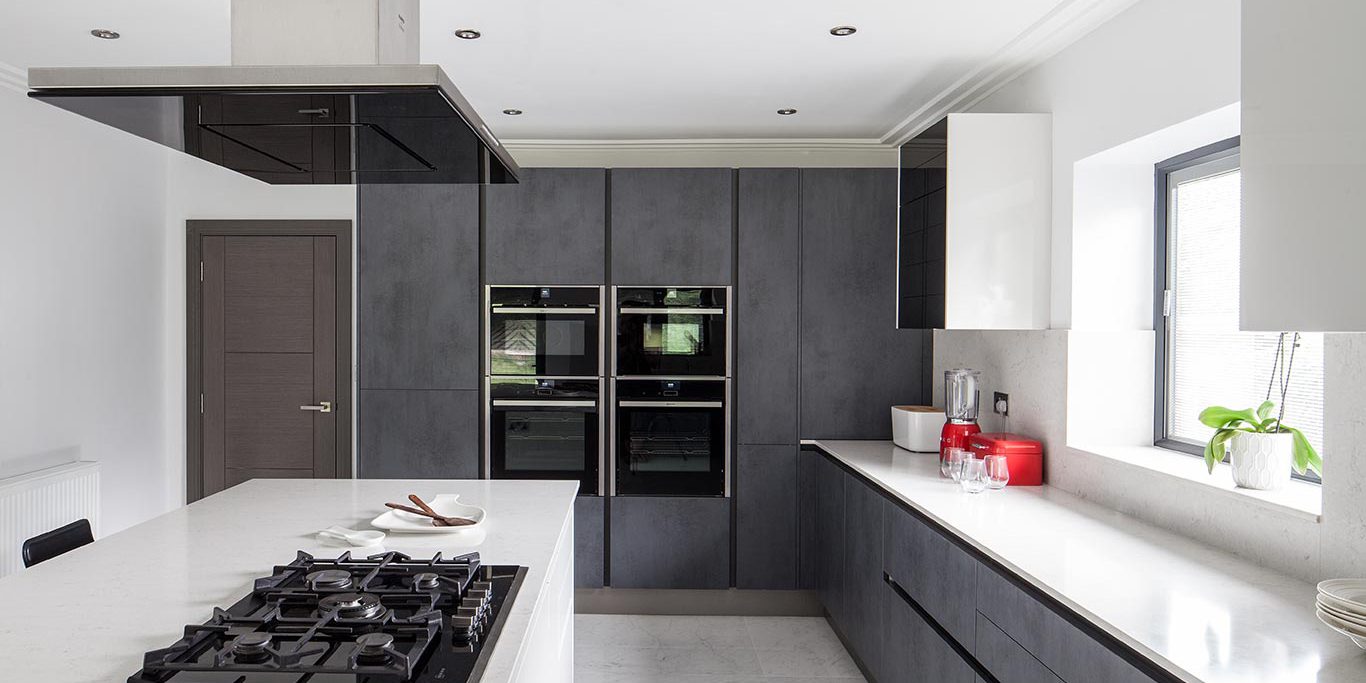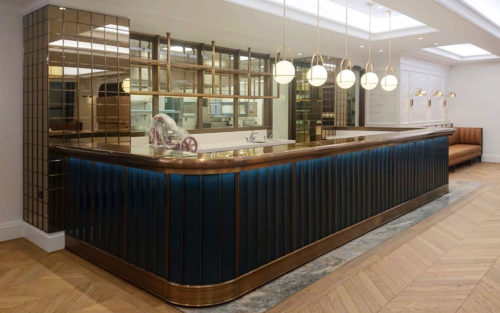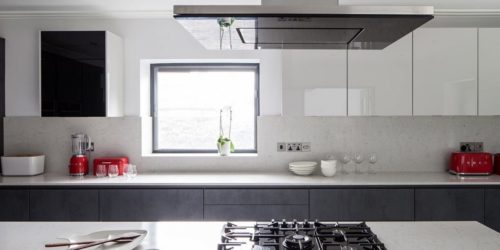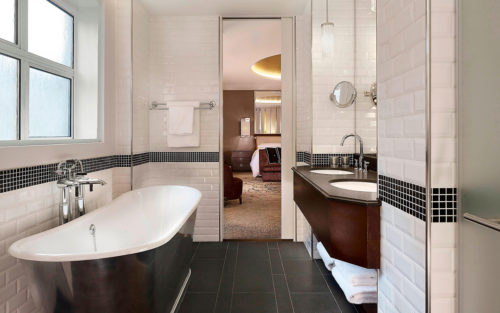Whether you are planning refurbishing your kitchen from scratch, or simply changing over out-of-date kitchen cabinets and worktops, every kitchen has a combination of many different elements – appliances, cabinetry, layout, tiling, worktops, the kitchen table, and so on. Irrespective of trends, most people set out with some common objectives which is to make the kitchen a pleasant place to cook in that is a comfortable and an efficient workspace, and in many instances today is also a pleasant room in which to sit and eat.
In some cases, of course, it may also be a place in which to work, many businesses being started “on the kitchen table” and as a result of Coronavirus, even more people are working from home.
Of course, what has changed considerably is the amount of technology that we have available that not only influences the performance of materials but also affects what can be done with the final design. For example, today we have many cabinets which, instead of having doors, slide out on rollers so that the contents can be accessed from the now open sides.
Colour can be one of the most important things in a kitchen and kitchens in shades of white, black, and charcoal are still popular this year. Interior design company Houzz has noted that in 2020 the search for “black kitchen” has increased 46% over a year ago. Taupe, and shades of grey from light to slate are proving very popular. One kitchen company has said that grey and black painted furniture teamed with marble worktops creates a durable kitchen that is “classic in nature, yet contemporary in finish”.
Green Is Also Popular
However, not to be outdone, green is also making an entrance. Rich forest greens have long been popular as a staple kitchen shade, but now earthy mid-greens and light greens are also popular for a contemporary look, which was highlighted by the Dulux Colour of the Year “Tranquil Dawn”. Houzz notes that searches for “green kitchens” have also increased by 50%. Also growing in popularity are wine-coloured tones such as deep burgundy being matched with the greys of the kitchen furniture.
There is a lot to store in the kitchen, but we don’t necessarily want it to be on display all the time, hence the slide-out cabinets mentioned earlier. Simple cabinetry can be used to hide things such as fridges and dishwashers, and bespoke storage elements can be used to hide worktop items such as kettles and toasters which can pop up when needed and be hidden away the rest of the time. Indeed, according to Google Trend Data 2018 – 2019, there has been no less than a 160% increase in the search for “built-in kitchen appliances” indicating a need for appliances that are easy to maintain, require minimal upkeep, and are out of sight when not in use.
More people are becoming aware of the environment in which we live and looking for eco solutions to reduce the carbon footprint. Things that can help are dedicated recycling bins in a cupboard, using induction hobs to reduce the amount of energy that is used in cooking – and also wasted – and installing a 3-in-1 hot water tap.
Technology Has Evolved Considerably
Over the last few years, technology in the kitchen has developed considerably. We now have vacuum drawers, steam ovens, and fridges that keep foods fresh for longer periods. There are also Wi-Fi enabled gadgets that can be controlled through the phone and USB points and sockets in drawers. You can even operate your kitchen lighting, which is concealed, through using Alexa or Siri.
It is now also possible to install a hot water tap that produces instant boiling water. Kettles are very often overfilled which means that both heat and water are wasted. With a boiling water tap you only use the exact amount of water that you need, saving energy and water. One report says that the installation of these taps has increased by half over the last year. Another trend has been the same taps made of brass with interesting features, and pairing them with similar finishes for door handles and drawer pulls.
Another trend in the last year has been kitchen island dining tables. There is nothing new about kitchen islands, but dining islands provide a separate space for dining, socialising, and also working on the proverbial “kitchen table”. It means that the family can spend time together cooking, eating, and just “hanging out”. More kitchens are also seeing TV’s installed on the walls to continue this trend.
Of course, an all-important feature of any kitchen is the worktops and upstands. Marble has long been popular and can look fantastic but does have its’ limitations. Quartz worktops, on the other hand, are making big inroads into kitchen design. Both granite and marble worktops have great appeal for some people, being available in a wide range of colours and having intricate patterns and veining. However, they do have a tendency to stain as they are porous, and for that reason need sealing on a regular basis.
However, quartz worktops in Walthamstow, or anywhere else, don’t need sealing, and they can be provided in a single colour rather than having all the patterns and veining of marble or granite. Quartz worktops are not a natural stone, although they contain around 93% quartz aggregates which are combined with resins and pigments. Engineered quartz worktops are hard-wearing, non-porous, easy to look after, and ideal for the kitchen or bathroom where hygiene is critical.
The quartz worktops that we manufacture at Marble & Granite can come with either a honed or polished finish, as preferred, and provide a versatile design solution for the contemporary kitchen. They will also add value to your home.
Engineered quartz worktops which are polished are totally unaffected by spills of coffee, red wine, vinegar, lemon juice, or anything else. They need no maintenance or treatment of any kind other than a wipe over with a damp cloth, and a little washing up liquid if necessary. Because it is non-porous, there is no chance of bacteria getting into engineered quartz stone, so it is totally suitable for contact with food, such as rolling out pastry, and so on. Quartz may be a tough material, but as with any kitchen worktop you should not place hot pans direct from the cooktop or oven on them, and you shouldn’t chop or cut directly on them either: always use a chopping board.




